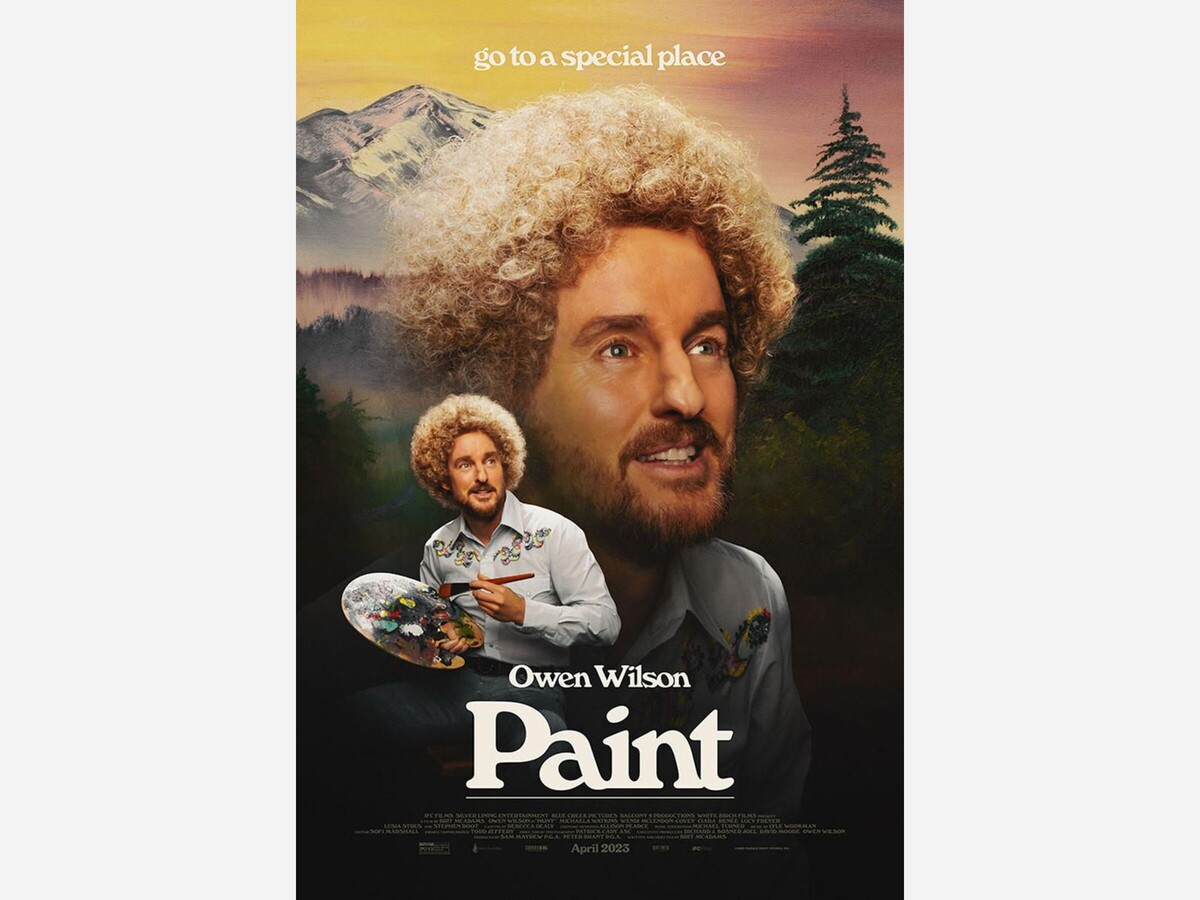Image

Sometimes there will be a movie released where it will appear as if multiple versions of the same general narrative have been put into one finished product. This results in an end result where all of the plot threads feel short-changed and the characters whose arcs are tied to these threads feel incomplete. Paint is an excellent example of a movie like this because the central arc of the protagonist is pulled in three different directions, none of which land.
Paint follows Carl Nargle (Owen Wilson), a Bob Ross-type television painter on a PBS affiliate who’s life is turned upside down when the station hires a new painter named Ambrosia (Ciara Renée) to fill the timeslot after him. As her popularity grows and his wanes, he has to confront what it means to be an artist. Stephen Root, Wendi McLendon-Covey, Michaela Watkins, and Lucy Freyer also star.
The problem with the movie is not the plot, the problem with the movie is that it seems like what the plot was supposed to be got caught up in a collection of scenes that belong in a different film. If Carl’s arc is supposed to be his descent into obsolescence, the film has to do a better job of putting that front and center. If the arc is supposed to be his conflict with the woman who is replacing him, then that needs to be clearer. If the arc is supposed to be his concern over the legacy he leaves behind, then that needs to have more screen time. All three of these possible arcs exist for Carl and, since the movie decides to shoehorn in a romantic subplot, there is almost no screentime for any of them to truly shine and become the a-plot of the narrative.
On top of that, there is this pacing problem with key narrative holes that make the movie hard to follow. Up until Ambrosia is brought in, there is no mention of the network having financial issues, however, that is an integral part of the decision to bring her in and have the second hour of painting. It is unclear how much time passes between scenes, however, it appears as if the movie (up until a certain point) takes place over a reasonably short amount of time which causes confusion about how quickly Carl has fallen into obscurity and how quickly Ambrosia has been embraced. There is also the issue of the contentious relationship between Ambrosia and Carl that never feels more than one-sided which just makes Carl not sympathetic.
The movie also feels like a writer/director’s attempt to be deep and do what other auteurs do without making sure they work within the context of the movie. There are scenes where they cut to places around Burlington to show how the town is reacting to the rise and return of his stardom, however, because it is never shown when he is at his lowest because it is dropped for most of the middle of the movie, it just feels like padding the runtime. The movie uses nonsequential storytelling to exposit the backstory about Carl and his relationship with his ex-girlfriends but because of how nonsequential it is the waters are just muddied by the methodology. There is also a weird period aesthetic at times where there is an overabundance of cathode ray televisions, VHS tapes, and other older technology with all the characters which is never really explained and just muddies the waters because a character gets picked up by an Uber at one point which indicates the movie is set in the modern day. If it was just Carl it would be understandable and part of the character but when other characters (and the PBS network) are using long-outdated technology it just feels weird.
This movie is entirely skippable and manages to make an hour and a half feel long, which is an achievement in a weird way. There are much better ways to spend time in a movie theater and there will be much better ways to spend time streaming the movie than watching Paint in any capacity.
Final Rating: 0/10